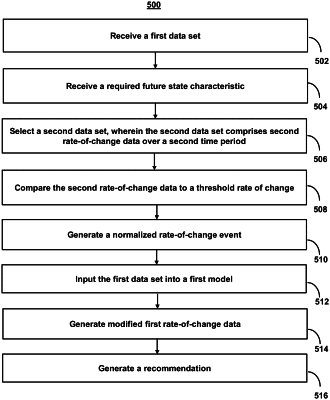| CPC G06N 3/0464 (2023.01) [G06N 3/045 (2023.01); G06N 3/088 (2013.01)] | 20 Claims |

|
1. A system for responding to predicted events in computer systems using artificial intelligence models, the system comprising:
one or more processors; and
a non-transitory machine readable medium comprising instructions that when executed by the one or more processors cause operations comprising:
generating a user profile for a user by:
receiving a first data set comprising a current state characteristic for a first system state; and
receiving a required future state characteristic for the first system state;
generating a synthetic profile for the user based on historical time-series data by:
receiving the historical time-series data;
training, using the historical time-series data, a second model using unsupervised learning, wherein the second model comprises a convolutional neural network; and
selecting, using the second model, a second data set from a plurality of available datasets based on similarities between state characteristics for the second data set and the current state characteristic and the required future state characteristic, wherein the second data set comprises second rate-of-change data over a second time period;
using the synthetic profile to generate a recommendation for the user by:
inputting the first data set into a first model to generate first rate-of-change data over a first time period for the first system state; and
generating for display, on a user interface, a recommendation based on the first rate-of-change data.
|